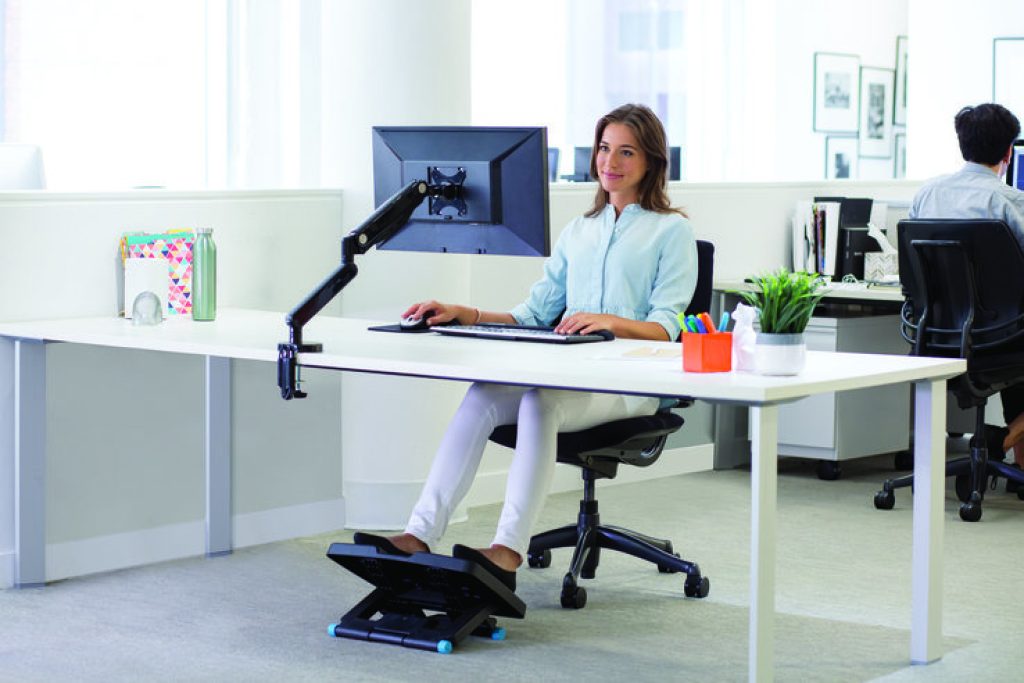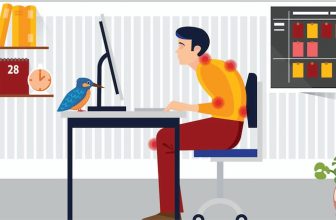If you are seeking the answer to why ergonomics is important in workplace, check out the following article of FittingChairs right now. We also provide you with some ergonomic tips to help you avoid several health issues that office workers usually get.
What is ergonomics in the workplace?

The study of humans in their working environment is referred to as ergonomics. So, what is ergonomic? An ergonomist, in particular, creates or changes labor to fit the worker, not the other way around.
The objective is to eliminate work-related pain and injury risk. In other words, while evaluating a workstation, we prioritize the employee.
Ergonomics (or ‘human factors’ in North America) is an area of research that tries to learn about people’s skills and limits, and then apply that knowledge to enhance people’s interactions with goods, systems, and surroundings.
But, why ergonomic is important overally?
Ergonomics strives to enhance work conditions and workplaces in order to reduce the risk of accident or harm. As technology advances, so does the need to ensure that the tools we use for work, relaxation, and pleasure are intended to meet the needs of our bodies.
Why ergonomics is important in workplace?

The entire economic cost of work-related accidents and illnesses is projected to be $60 billion dollars, according to Safe Work Australia.
According to new study, lower back pain is the most frequent work-related ailment in the world, affecting workers in offices, construction sites, and, at the greatest risk, agriculture.
Ergonomics strives to design workspaces that are safe, pleasant, and productive by taking into account human strengths and limits, such as body size, strength, skill, speed, sensory capacities (vision, hearing), and even attitudes.
What is the purpose of ergonomics in the workplace?
Ergonomics improves quality of employee’s productivity

Work becomes more irritating and difficult to complete when ergonomic risk factors such as uncomfortable postures, excessive force, and high task repetition are present. This leads to a slew of issues, including decreased productivity.
The ergonomics enhancement method lowers ergonomic risk factors and enhances the worker-work environment interaction. When done correctly, this method eliminates productivity obstacles and makes work duties easier and faster to do.
How to improve ergonomics in the workplace
Ergonomic safety tips

Ensure that the weight of your arms is properly supported at all times. The muscles in your neck and shoulders will be crying at the end of the day if your arms aren’t supported.
Keep your head in a neutral posture, with the weight of your head precisely above the base of support (neck). Keep your head and neck from “craning” forward.
Don’t be a slacker! Slouching puts extra strain on your back’s discs and vertebrae. Use your chair’s lumbar support and avoid sitting in a position that puts more weight on one side than the other. To avoid leaning and reaching, move your chair as near to your task as feasible. Make sure you “scoot” your way around the room every time you sit down.
Position the display immediately in front of you, with the top no higher than eye level. So you don’t have to bend your head and neck as much, the keyboard should be right in front of the display.
It’s not a good idea to talk on the phone with the phone receiver wedged between your neck and ear. Don’t do that because you know it’s true!
The keyboard and mouse should be near enough to avoid overreaching, which puts pressure on the shoulders and arms.
To avoid eye strain, make sure your monitor is not too close to your eyes; it should be at least an arm’s length away.
Take efforts to reduce screen glare and make sure the monitor is not in direct sunlight.
You may give your eyes a break by glancing at items at a distance for a few seconds every now and then.
When seated, your feet should not be dragging. Use a footrest or lower the keyboard and chair if your feet don’t reach the floor comfortably if there is pressure on the backs of your legs.
Moreover, for employers, it’s essential to know how often should ergonomic training be offered in the workplace.
Ergonomic tips for computer users

For computers users, you should follow these above ergonomic solutions steps to avoid releases caused by sitting for long hours.
Besides, you also need to take some work techniques into account helping you protect yourself.
- Use macros or software tools that allow “sticky keys” to reduce keystrokes. Reduce pointing-device motions by using scroll locks and keystroke combinations.
- To avoid making the same movements for long periods of time, alternate tasks to change your working position.
- When working at the keyboard, keep your fingers and knuckles relaxed.
- When typing, never use a pen or pencil in your hand.
- Excessive force on the keyboard should be avoided. According to studies, the average user hits the keyboard with four times the needed force.
- Keep your pointing device in a loose grip. You should be able to relax your hand.
- When working, periodically fixate on faraway items to give your eyes a break.
Just by these simple steps, you can totally decrease the risk of getting unexpected health issues caused by sitting too long when working on computers.
Besides, if you need to know how often might ergonomic training be offered in the workplace, click here to develop your employee safety and usefulness now.
We have just provided you with the reason why ergonomics is important in workplace as well as some useful tips to help you alleviate the risk of office worker health problems. Follow FittingChairs to see more updates.






